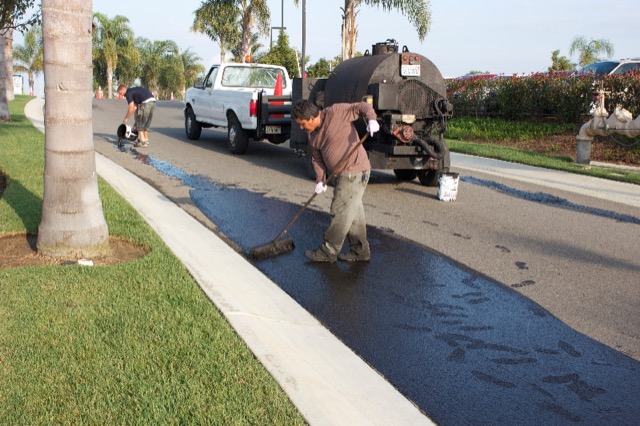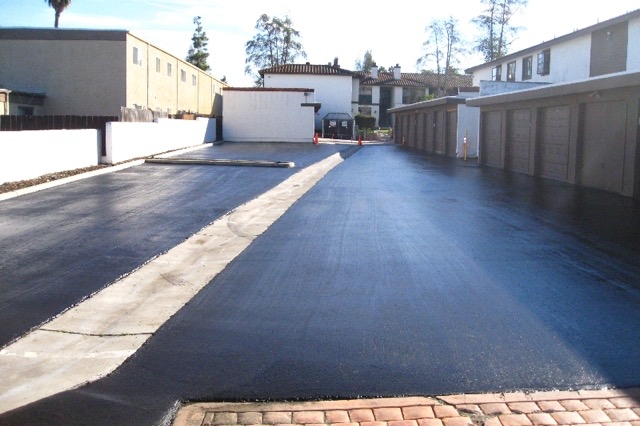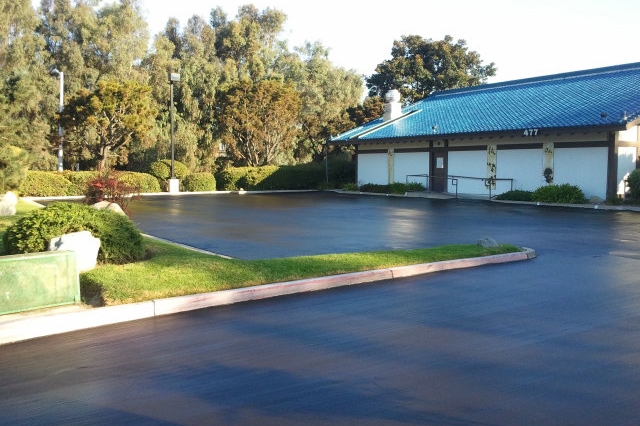Asphalt sealcoating is designed to protect asphalt pavements from the damaging effects of the environment, including moisture and ultraviolet oxidation.
Asphalt Sealcoating FAQ’s
What is asphalt sealcoating?
Over time, rain, oil, and other chemicals can damage the surface of your asphalt, making it brittle and unattractive. The process of asphalt sealcoating involves sealing the cracks to prevent ice and water from compromising the integrity of your driveway or parking lot. We recommend that our customers create a pavement sealing plan to maintain their asphalt, rather than spending thousands of dollars to replace the asphalt after years of neglecting it.
What are the advantages of sealcoating your driveway or parking lot?
If you are hoping to extend the life of your asphalt and ultimately save money for years to come, sealcoating is the best way to accomplish this. Your new sealcoating will protect your driveway or parking lot from weather, oxidation, and oil and chemicals. The beautiful dark surface color not only protects your investment, but boosts your property’s curb appeal at the same time. Contact us to schedule your sealcoating this season, and enjoy the benefits of extended pavement life.
How often should you sealcoat your driveway or parking lot?
Asphalt sealcoating frequency is determined by the weather in your region and the condition of your exist- ing asphalt. In San Diego, we have a mild climate which means you will be able to sealcoat your asphalt less frequently than people who live in regions that have four seasons with scorching summers and freezing winters. Generally, you should reseal your driveway or parking lot every two to three years. However, look at your asphalt to see if it’s looking weather, gray, or has hairline cracks. If so, you may need to seal it more frequently.
How long should I wait to drive on my sealcoated surface?
Drying time depends on many factors like temperature, sun exposure, and relative humidity when you job is done. Your All-Pro Asphalt specialist will let you know what is best. Generally, it’s best not to drive on a newly sealcoated surface for at least 24 hours, and sometimes 48 hours. We always recommend being cautious and giving your surface as much time to dry as possible. This will prevent needed to sealcoat it sooner because you didn’t wait the appropriate amount of time. Talk to us when scheduling and we can find the best time to sealcoat around your busy schedule.





